
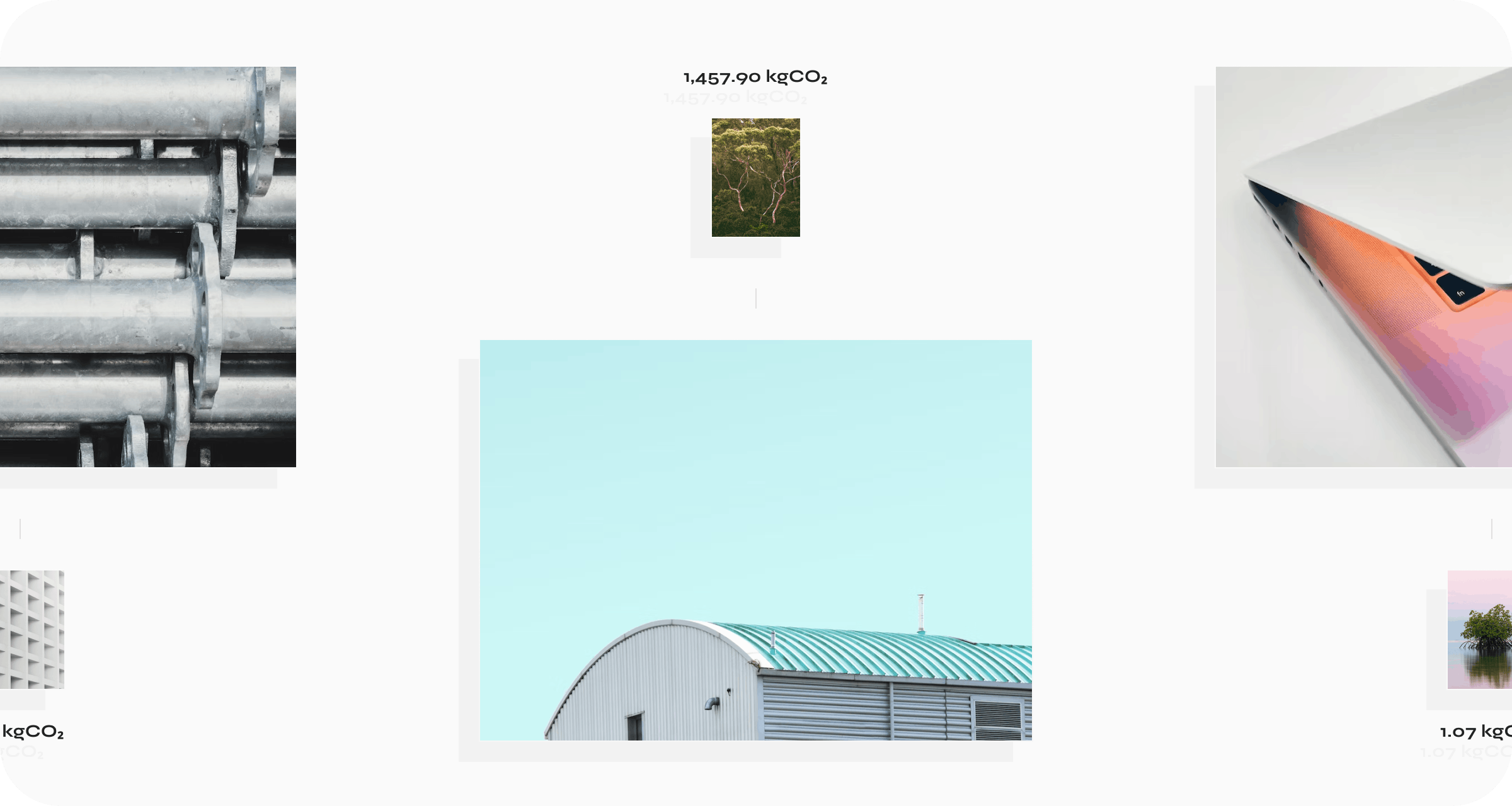
How could the procurement industry contribute to the transition to a global net zero future?
Well, the procurement industry is huge.
Worldwide, the procurement industry is valued at $6.15 billion and expected to grow a further 11% by 2030 (Grand View Research, 2022).
And procurement is a vital part of the supply chain for companies – focused on obtaining the goods and services needed to run a business, from office supplies to leasing company cars, and everything in between.
Of course, each of the products and services a company procures comes with inevitable environmental impact – the energy and materials needed to manufacture office stationery, the petrol used to run the cars, and so on.
And when a company procures goods or services, the environmental impact of those goods or services becomes part of their carbon footprint – adding to their Scope 3 emissions.
Scope 3 emissions are notoriously difficult for companies to accurately measure and reduce, meaning they’ve so far often been left unaccounted for. But, for most businesses they represent over two-thirds of the total carbon footprint (McKinsey), so this leaves a big gap in terms of business climate action.
Which also means there’s a big opportunity for the procurement industry to create sustainable procurement solutions and win competitive advantage.
Let’s take a look at two of the key opportunities for sustainability in procurement – as well as an example of how procurement companies are implementing these solutions, with Paid.
Subscribe for the latest insights into driving climate positivity
Opportunity 1: making carbon emissions from procurement visible 👀
One of the big issues right now is that Scope 3 emissions are largely invisible – it’s very difficult for companies to see and understand the environmental impact of activities across their entire supply chain.
So, the first step is to make those emissions visible.
And procurement platforms are uniquely positioned to enable that.
A procurement platform could automatically calculate the emissions of any goods or services being procured, and make them instantly visible within the platform to corporate buyers.
Once the emissions are visible, this enables companies to:
- Easily keep track of their scope 3 emissions from procurement for simple sustainability reporting – and with compliance to corporate climate disclosure regulations becoming mandatory, this is now a priority for all businesses.
- Analyse existing company spend based on carbon emissions, and address areas of high emissions by switching supplier/product or by actively engaging and collaborating with suppliers to reduce the environmental impact.
- Evaluate different products and suppliers based on carbon emissions for new spend, and opt for the lowest carbon option to reduce their carbon footprint.
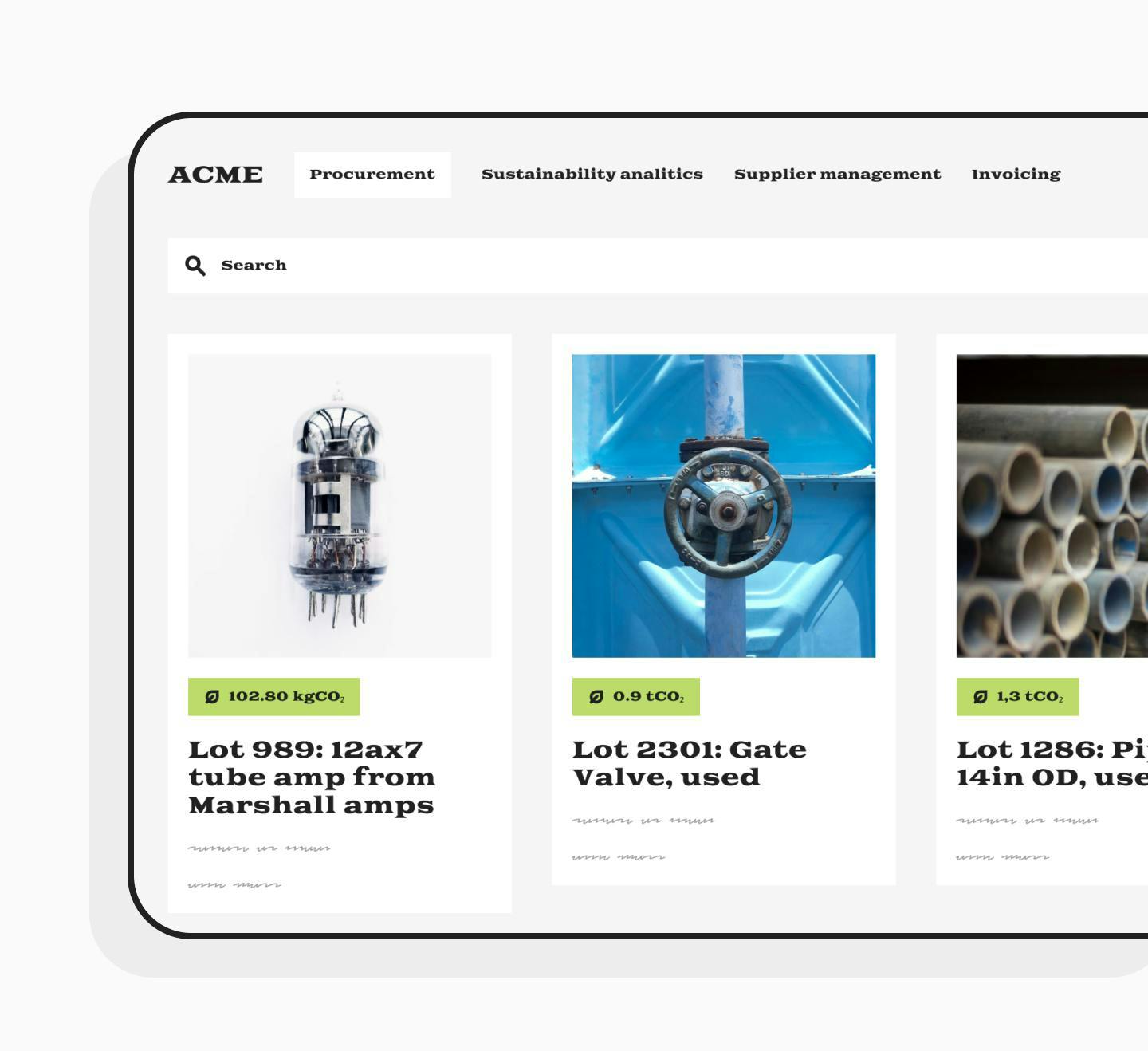
Opportunity 2: automatically offset procurement emissions 🌍
Once the emissions from procurement spend have been calculated they could also be automatically offset within the procurement platform too.
Enabling offsetting means that companies can instantly compensate for the carbon emissions produced by the goods and services being procured, making that spend carbon neutral or net zero and:
- Making it easy for companies to stay on track toward their climate targets
- Providing crucial funding to carbon projects that are truly moving the needle on climate solutions – from protecting and restoring nature to scaling up cutting-edge carbon removal technologies.
It goes without saying that if offsetting is being offered, it should only ever be through high-quality carbon projects that are truly making the climate impact they claim to.
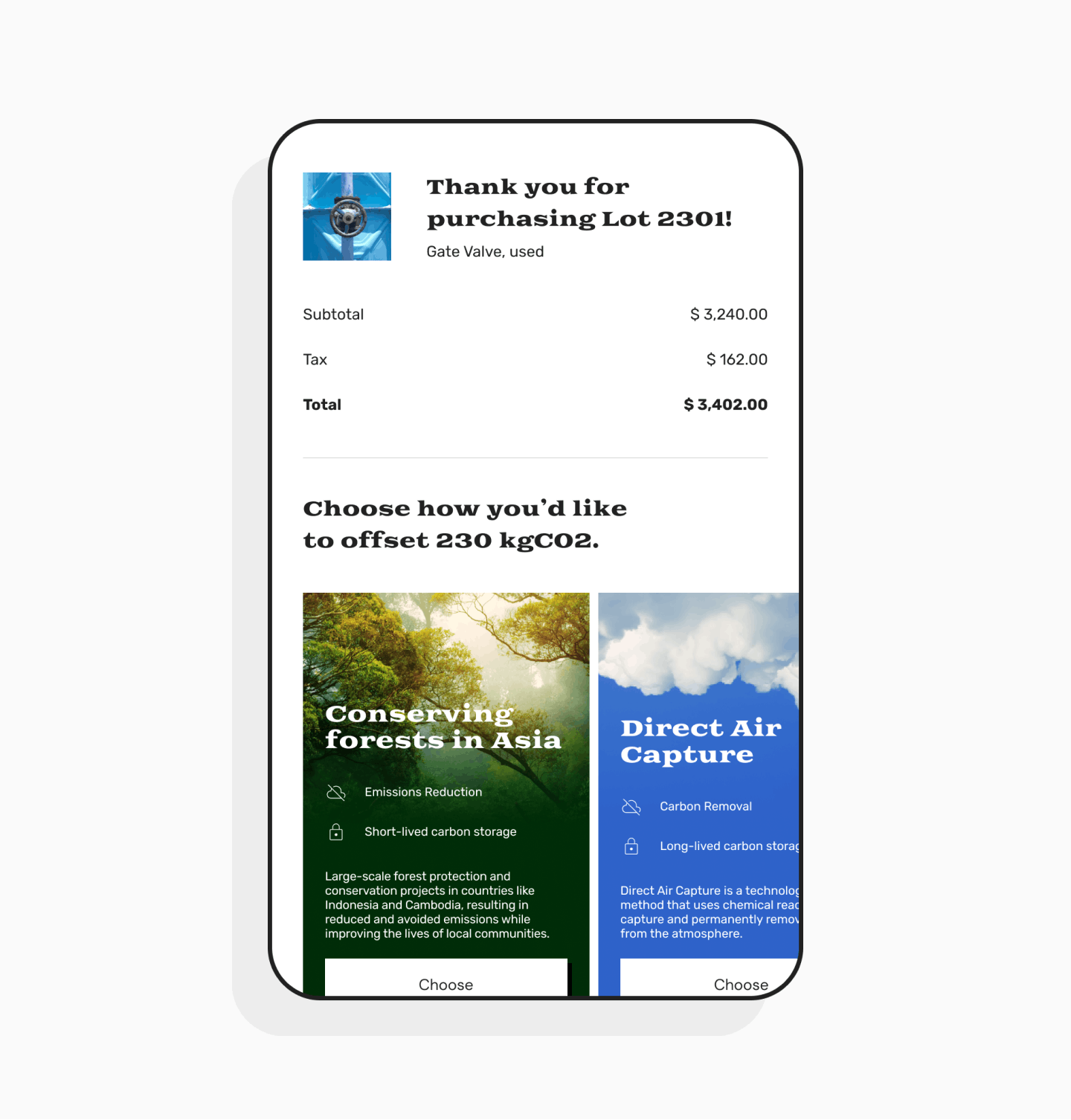
An example: how Paid is powering sustainable procurement in partnership with Lune
To see these solutions in action, look no further than Paid’s procurement platform.
Paid partnered with Lune to integrate both automated emissions calculations and credible carbon offsetting into their platform, bringing real climate action into every single procurement transaction that takes place through the Paid platform.
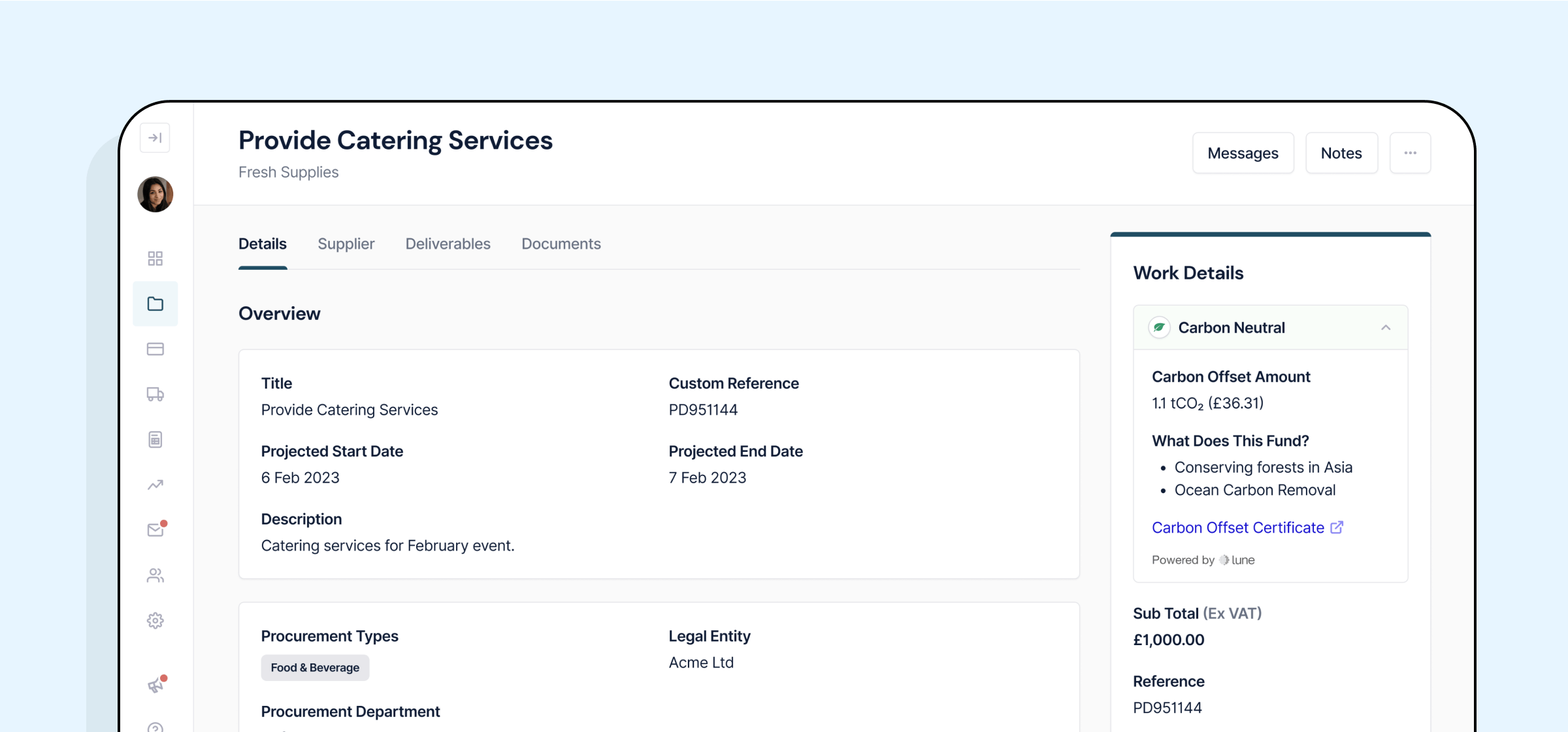
This is game-changing for the transition to a net zero future – especially if every procurement provider and platform did the same.
Plus, as well as offering the option to offset to their customers, Paid has also taken things a step further by funding the offsetting of procurement transactions themselves..
For World Sustainable Procurement Day on 21 March 2023, Paid paid to offset all work done through their platform themselves – starting vital conversations with their customers and pushing for change within the sector.
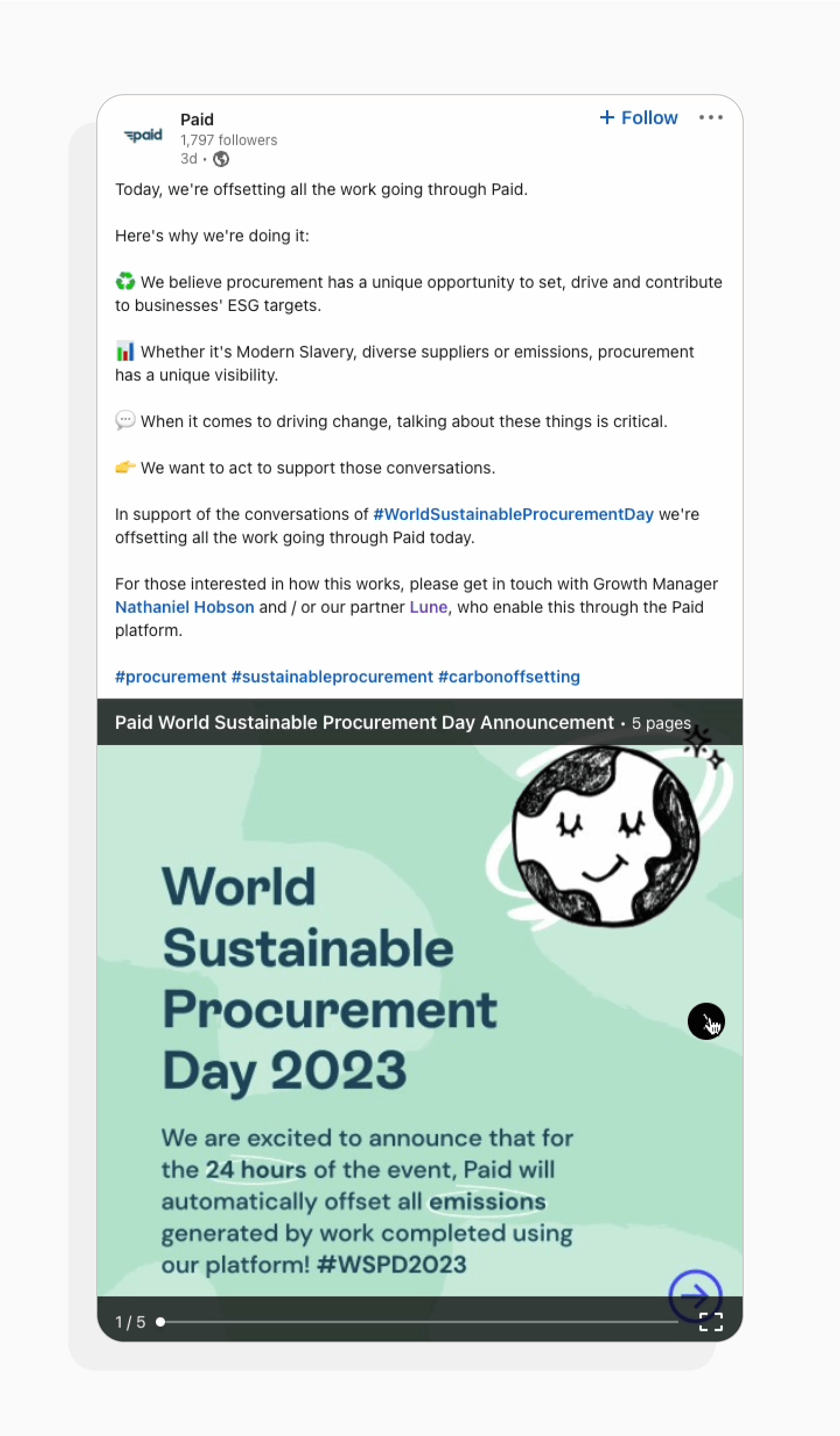
To find out more and kickstart your company’s journey towards a more sustainable supply chain, go to lune.co/procurement
Popular insights
Popular insights



